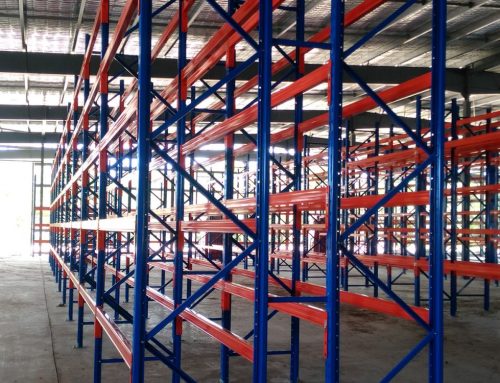Pallet racks are an important part of many businesses. They provide a way to store inventory and materials in an organized manner, which can help improve efficiency and productivity. There are many different types of pallet racks available on the market, so it is essential to understand the advantages of each type before making a purchase. This blog post will discuss the benefits of using a pallet rack system in your business.
What are the benefits of racking?
Racking systems provide an organized way to store products and materials. This can help with efficiency, allowing employees to quickly find the items they need without having to search through piles of goods or pallets. Additionally, racking systems can make inventory management easier since all the items are easily accessible and in one place. Racks also improve safety because they keep items off the floor and reduce the chances of slips and falls. Finally, pallet racks can save time by allowing workers to quickly locate and move goods around a warehouse or other facility.
What is the purpose of pallet racking?
Pallet racking is a type of storage system used in warehouses and other industrial facilities to store large quantities of goods. It involves using specially designed racks or shelves arranged in columns and rows, with each rack capable of holding multiple pallets. The primary purpose of pallet racking is to provide an efficient and organized way to store items, so they can be easily accessed when needed.
The benefits of using a pallet racking system are numerous. First, it allows companies to maximize their storage space by giving them more room to work. This reduces the clutter in warehouses and makes it easier for staff members to move around safely without worrying about tripping over things. With this system, companies can also easily track their inventory and ensure that items are not getting lost or misplaced.
What are the four main components of pallet racks?
Pallet racks are composed of four main components: uprights, beams, decking, and safety components. Uprights are the vertical columns that support the entire pallet rack system. Beams are horizontal members that hold the decks at different heights to provide storage space for multiple pallets. Decking is the material used to create shelves and ledges on which items can be stored within each pallet rack system. Finally, safety components such as protective guard rails help keep workers safe by providing additional protection against falling objects or items being dropped from higher levels of a pallet rack system.
What is the purpose of racking design?
Pallet racking is a storage system used in warehouses and stockrooms to store goods, products, and materials on pallets. It consists of several upright frames connected by horizontal beams that can be joined together or taken apart for easy transportation. Pallet racks are designed for efficiency, ease of use, safety, and maximum durability. The design features allow businesses to save space, improve organization and increase productivity in their warehouse operations.
The purpose of pallet racking is to provide efficient storage solutions while maximizing the available space within a particular area. This means that the shelves are arranged so that they occupy minimal space yet still provide sufficient storage capacity. By using pallet racking, businesses can maximize their storage capabilities without expanding their warehouse. With the help of a racking system, it is possible to store more goods in a smaller space, saving on costs.
Pallet racking also offers greater safety standards for staff working in the warehouse. The uprights and beams provide added protection against falling objects and other hazards. Additionally, the racking design is also meant to protect against accidents such as forklift collisions and pallet tipping.
What is the best type of pallet racking system?
The best type of pallet racking system depends on your specific needs and preferences. It is important to consider the size of your warehouse floor, how much weight you are storing, and any safety regulations that must be met. There are various options available on the market, including roll-formed systems (also known as selective racking), structural steel pallet racks, drive-in/drive-thru systems, and more. Depending on what type of product you are storing and how much space you have available, one option may be better suited. For example, while a roll-formed system may offer maximum storage density within limited floor space requirements, it may not offer the same durability or reliability as a structural steel system when dealing with heavier loads.
The best type of pallet racking system for your business depends on your warehouse requirements and preferences. By carefully evaluating your needs, you can determine which option would be the most cost-effective and efficient solution for your operations. With the right pallet rack system in place, businesses can expect improved organization, access to stored items, and greater productivity, all while ensuring the safety of their personnel.




